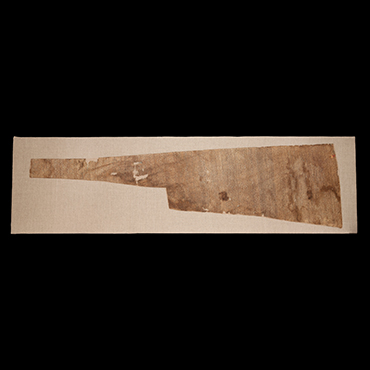Founded in AH 1284/1867 CE, the Museo Arqueológico Nacional (MAN) is a prominent history museum in Spain. Its mission is to preserve, research, and present its diverse collections of archaeological finds, works of art and architecture, and historical objects. The museum moved to its current home in AH 1312/1895 CE and was most recently renovated between AH 1429 and 1435/2008 and 2014 CE, to adapt it to the needs of contemporary audiences.
The MAN’s extraordinary collections, spanning prehistory to the mid-13 century AH/19th century CE, comprise more than one million objects. Located at the artistic and cultural center of Madrid, the MAN offers accessible collections that show the diverse cultural history of the country. Its comprehensive collections of Islamic art from al-Andalus demonstrate the influence of Islamic cultures on the Iberian Peninsula as a whole.
The MAN brings to AlMadar an exploration of gold as a material within legal and cultural frameworks in Islamic and Christian realms in Spain. Gold is a symbol of wealth, an insurance for the future, and an expression of power. As a material, it has been coveted, praised, and criticized, sparking reflections on the balance between material and spiritual wellbeing. The weight and purity of gold and its transformation into numbered systems of weights and coins has been a matter of legal, religious, and political importance. This presentation explores the importance of measuring gold in al-Andalus,
its social implications, and its meaning in daily life for those who carried, displayed, and wore it.
Fragment of a surcoat from the burial clothes of Prince Philip of Castile
The silk surcoat of Prince Philip of Castile represents a display of wealth and exchange between the Islamic and Christian realms of the Iberian Peninsula. Andalusi gold and luxury goods attracted attention in the Spanish Christian kingdoms. This fragment—woven from silk and gold-wrapped silk threads (gilded strips of thin leather around a silk core), with a repeating design of eight-pointed stars—is evidence of the refinement of Andalusi textiles.
Prince Philip was one of the younger brothers of Alfonso X of Castile and León. In AH 670/1272 CE, he revolted with a group of nobles against his brother and formed an alliance with Muhammad I, the Nasrid ruler of Granada. The brocade for the surcoat may have been a gift from the Nasrid court, as the tailoring of clothes in the Christian north was different from that of clothes worn by Muslims. The surcoat (in Castilian, pellote) was worn over a shirt and a medium-length skirt or tunic and had large side openings that left the hips and trunk visible. Its name in Castilian refers to its rabbit or sable fur lining.
Santa María la Blanca, Villalcázar de Sirga, Palencia, Spain
Probably woven in Almería, al-Andalus, 7th century AH/13th century CE
Silk threads, silk threads wrapped with gold, h. 137 × w. 38 cm
Museo Arqueológico Nacional, 51010

